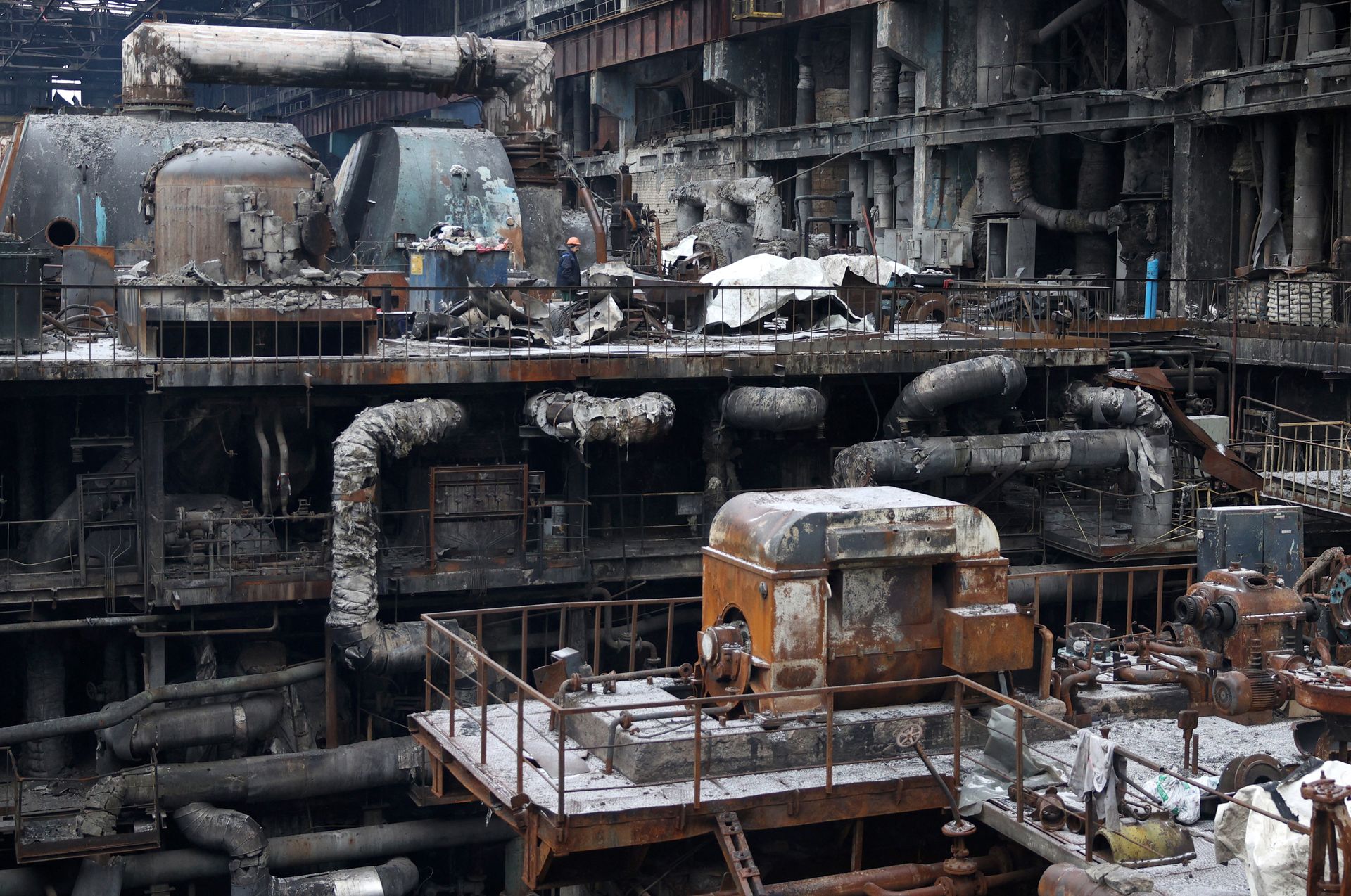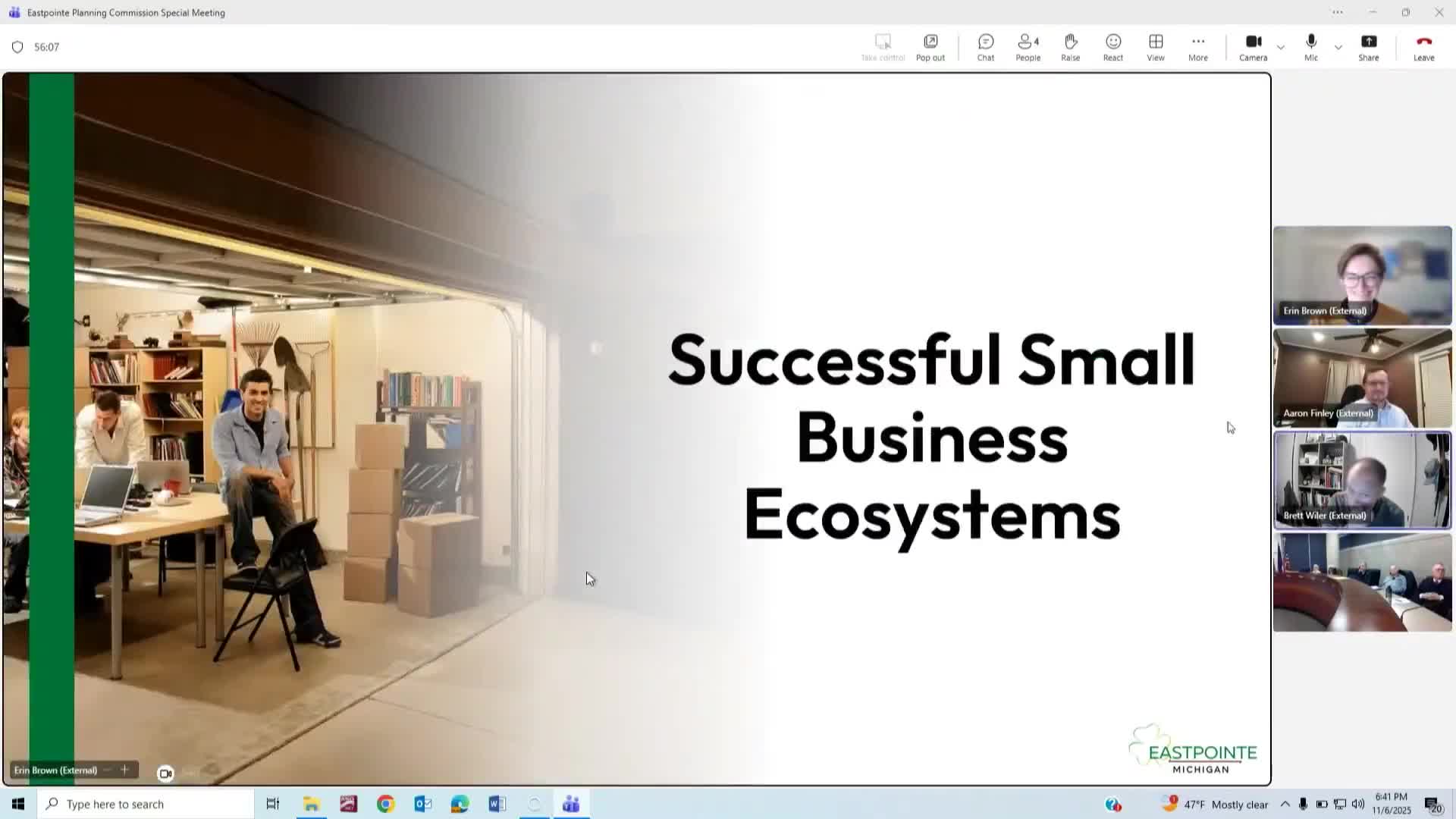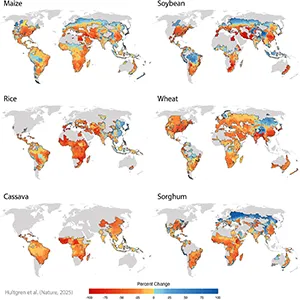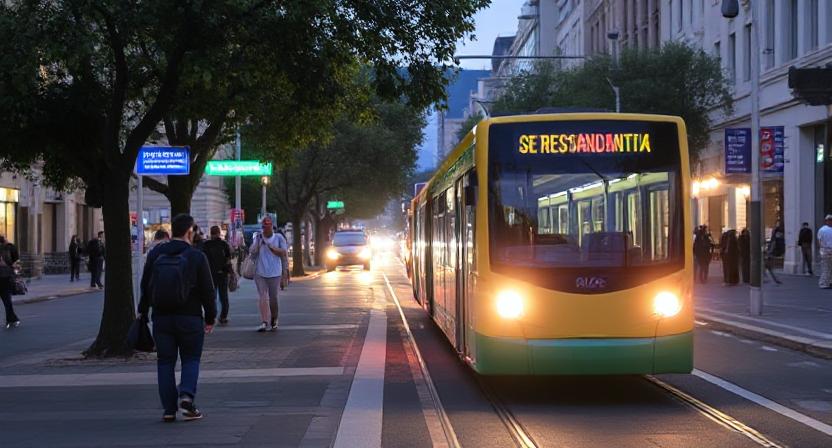Indonesia’s billion dollar fuel fraud exposes deep corruption crisis – East Asia Forum

Report on the Pertamina Corruption Scandal and its Implications for Indonesia’s Sustainable Development Goals
1.0 Executive Summary
A significant corruption scandal involving Indonesia’s state-owned oil and gas enterprise, Pertamina, has resulted in state losses estimated at US$12.06 billion between 2013 and 2018. An investigation by the Attorney-General’s Office (AGO) in February 2025 identified nine suspects, including Pertamina executives, in a fuel import embezzlement scheme. This report analyzes the scandal’s direct and indirect impacts on Indonesia’s progress towards achieving the United Nations Sustainable Development Goals (SDGs), with a particular focus on SDG 16 (Peace, Justice and Strong Institutions), SDG 8 (Decent Work and Economic Growth), and SDG 10 (Reduced Inequalities).
2.0 Background of the Scandal
The corruption case centers on a multifaceted scheme with severe economic and social consequences. The key elements of the operation include:
- Deliberate reduction of domestic refinery output to create a dependency on fuel imports.
- Manipulation of import tenders to facilitate procurement at inflated prices.
- The sale of adulterated, lower-octane fuel to the public at premium prices.
This scandal is not an isolated incident but reflects a historical pattern of corruption within the state-owned enterprise (SOE), dating back to the Suharto era. Previous convictions of high-level Pertamina executives in 2019 and 2024 underscore the systemic nature of the issue.
3.0 Impact on Sustainable Development Goals (SDGs)
The Pertamina scandal fundamentally undermines Indonesia’s commitment to the 2030 Agenda for Sustainable Development. The repercussions extend beyond financial losses, affecting the nation’s institutional integrity, economic stability, and social equity.
3.1 SDG 16: Peace, Justice and Strong Institutions
The case represents a critical failure in establishing effective, accountable, and transparent institutions.
- Erosion of Institutional Integrity: The deep-rooted corruption within a major SOE highlights a systemic weakness in governance and oversight, directly contravening SDG Target 16.5 (Substantially reduce corruption and bribery).
- Weakening of Anti-Corruption Bodies: The prosecution of the case by the AGO, rather than the specialized Corruption Eradication Commission (KPK), signals a shift away from addressing systemic corruption. The KPK’s diminished authority, following legal revisions and budget cuts, threatens long-term institutional reform as per SDG Target 16.6.
- Politicization of Appointments: The appointment of political loyalists to senior positions within Pertamina following the scandal raises concerns about cronyism and undermines the principle of merit-based, accountable public service.
- Legal Impunity: Revisions to the SOE Law that shield executives from being classified as “state officials” create barriers to prosecuting corruption, weakening legal deterrents and accountability frameworks.
3.2 SDG 8: Decent Work and Economic Growth & SDG 1: No Poverty
The economic fallout from the scandal directly impedes sustainable economic growth and poverty reduction efforts.
- Economic Drain: The US$12.06 billion loss represents a significant diversion of public funds that could have been invested in infrastructure, education, and healthcare, thereby hindering progress on SDG 8.
- Impact on Citizens: The sale of adulterated fuel caused widespread vehicle damage, imposing additional maintenance costs on citizens and shortening engine life. This financial burden disproportionately affects lower-income households, pushing them closer to poverty and undermining SDG 1.
3.3 SDG 10: Reduced Inequalities & SDG 7: Affordable and Clean Energy
The scandal has exacerbated existing inequalities and compromised access to essential services.
- Disproportionate Impact: The cascading price increases and the necessity of purchasing low-quality fuel at inflated prices most severely affected lower-income Indonesians and those in remote regions where Pertamina holds a monopoly. This widens the inequality gap, contrary to the objective of SDG 10.
- Energy Affordability: By manipulating the market and deceiving consumers, the scheme undermined the public’s access to affordable and reliable energy, a key component of SDG 7.
4.0 Political Context and Institutional Response
The handling of the Pertamina case suggests political calculations aimed at consolidating power. The Prabowo administration has emphasized that the corrupt activities occurred under the previous government, positioning itself as a “cleaner” alternative. The scandal emerged concurrently with government plans to centralize control over SOEs through a new sovereign wealth fund, raising questions about the timing. The prosecution by the AGO, which focuses on recovering stolen funds rather than systemic reform, aligns with a retreat from the comprehensive anti-corruption strategy once championed by the KPK.
5.0 Conclusion and Outlook
The Pertamina fuel fraud is a stark illustration of how systemic corruption can derail national development priorities. It directly obstructs progress on multiple SDGs, most notably SDG 16, by corroding institutional trust and accountability. The immense financial losses hamper economic growth (SDG 8), while the direct costs passed on to consumers exacerbate poverty and inequality (SDG 1 and SDG 10). For Indonesia to make meaningful progress in its anti-corruption efforts and achieve its sustainable development targets, a renewed commitment to strengthening institutional integrity, ensuring the independence of anti-corruption bodies, and moving beyond political rhetoric to decisive, systemic action is imperative.
1. Which SDGs are addressed or connected to the issues highlighted in the article?
The article on the Pertamina corruption scandal in Indonesia touches upon several Sustainable Development Goals (SDGs) due to the wide-ranging impact of the corruption on the country’s governance, economy, and society. The following SDGs are most relevant:
- SDG 16: Peace, Justice and Strong Institutions: This is the most central SDG, as the article’s core theme is corruption within a major state-owned enterprise (SOE), the weakening of anti-corruption bodies, and the overall impact on governance and the rule of law.
- SDG 8: Decent Work and Economic Growth: The scandal resulted in massive financial losses for the state, which directly undermines economic stability and growth potential.
- SDG 10: Reduced Inequalities: The article explicitly states that the impacts of the scandal, such as higher fuel prices and vehicle damage, disproportionately affected lower-income Indonesians and those in remote regions.
- SDG 7: Affordable and Clean Energy: As the scandal involves an oil and gas enterprise, it directly impacts the affordability and reliability of energy for the public.
- SDG 1: No Poverty: The financial burdens placed on citizens, particularly the poor, through inflated prices and additional costs, work against poverty reduction efforts.
2. What specific targets under those SDGs can be identified based on the article’s content?
SDG 16: Peace, Justice and Strong Institutions
- Target 16.5: Substantially reduce corruption and bribery in all their forms.
The article is centered on a massive corruption scandal involving “fuel import embezzlement,” “manipulated tenders at inflated prices,” and bribery. The conviction of a former subsidiary head for bribery and a former CEO for corruption are specific examples that directly relate to this target.
- Target 16.6: Develop effective, accountable and transparent institutions at all levels.
The article highlights a systemic failure of accountability within Pertamina, a state-owned enterprise. It discusses the “diminished powers” of the Corruption Eradication Commission (KPK) and revisions to the SOE Law that shield executives from corruption charges by “revoking their classification as state officials,” which points to a weakening of institutional effectiveness and transparency.
- Target 16.3: Promote the rule of law at the national and international levels and ensure equal access to justice for all.
The article raises concerns about the rule of law with the new president’s proposal to pardon “those accused of corruption if they return what they stole,” which could weaken legal deterrents. The shifting of prosecution from the systemic-focused KPK to the individual-focused AGO also signals a “retreat from tackling systemic corruption through institutional reform.”
SDG 10: Reduced Inequalities
- Target 10.2: By 2030, empower and promote the social, economic and political inclusion of all… irrespective of… economic or other status.
The article directly points to the violation of this target by stating, “Lower-income Indonesians were hit hardest by the cascading price increases.” Furthermore, it notes that in “remote regions, Pertamina often has a monopoly, leaving consumers with no choice but to buy lower-quality fuel at higher prices,” highlighting a clear economic inequality based on income and geographic location.
SDG 8: Decent Work and Economic Growth
- Target 8.1: Sustain per capita economic growth in accordance with national circumstances.
The corruption scheme reportedly cost the state “nearly 197.7 trillion Indonesian rupiah (US$12.06 billion) between 2013–18.” Such a colossal loss of public funds directly hampers the state’s ability to invest in infrastructure, services, and other drivers of economic growth, thereby threatening sustained growth.
SDG 7: Affordable and Clean Energy
- Target 7.1: By 2030, ensure universal access to affordable, reliable and modern energy services.
The scandal directly undermined this target. The scheme involved selling “adulterated lower-octane fuel at premium prices” and forcing imports through “manipulated tenders at inflated prices.” This made energy (fuel) less affordable and less reliable (low-quality) for the Indonesian public.
SDG 1: No Poverty
- Target 1.4: By 2030, ensure that all men and women, in particular the poor and the vulnerable, have equal rights to economic resources…
The article explains that the scandal led to “higher maintenance costs and potentially shortened engine life” for vehicles, placing “additional financial burdens on vehicle owners.” For lower-income individuals, these unexpected costs reduce their disposable income and access to economic resources, pushing them closer to or deeper into poverty.
3. Are there any indicators mentioned or implied in the article that can be used to measure progress towards the identified targets?
SDG 16: Peace, Justice and Strong Institutions
- Indicator for Target 16.5: The article explicitly mentions Indonesia’s “corruption perception score improved slightly in 2024,” which refers to the Corruption Perceptions Index (CPI), a key indicator used to measure progress against this target. The description of the embezzlement scheme involving public officials and private companies also implies indicators 16.5.1 (prevalence of bribery involving public officials) and 16.5.2 (prevalence of bribery in businesses).
- Indicator for Target 16.6: The massive state financial loss of “US$12.06 billion” serves as a quantitative indicator of institutional ineffectiveness and lack of accountability. Furthermore, the mention of “2025 budget cuts” for the KPK is a measurable indicator of the weakening of an anti-corruption institution.
SDG 10: Reduced Inequalities
- Indicator for Target 10.2: The article provides qualitative indicators by describing the disproportionate economic impact on specific population groups. The statements that “Lower-income Indonesians were hit hardest” and that consumers in “remote regions” were left with no choice but to buy expensive, low-quality fuel serve as evidence of widening inequality.
SDG 8: Decent Work and Economic Growth
- Indicator for Target 8.1: The “US$12.06 billion” in state losses is a direct financial indicator that can be measured as a percentage of GDP, showing the negative impact of corruption on the national economy and its potential for growth.
SDG 7: Affordable and Clean Energy
- Indicator for Target 7.1: The “inflated prices” of fuel resulting from manipulated tenders and the sale of “lower-octane fuel at premium prices” are direct indicators of a decrease in energy affordability for the population.
SDG 1: No Poverty
- Indicator for Target 1.4: The “additional financial burdens” and “higher maintenance costs” for vehicle owners can be measured through household expenditure surveys. These costs represent a reduction in the disposable income of vulnerable populations, indicating a setback in their access to economic resources.
4. Create a table with three columns titled ‘SDGs, Targets and Indicators” to present the findings from analyzing the article.
| SDGs | Targets | Indicators Identified in the Article |
|---|---|---|
| SDG 16: Peace, Justice and Strong Institutions | 16.5: Substantially reduce corruption and bribery in all their forms.
16.6: Develop effective, accountable and transparent institutions at all levels. |
– Indonesia’s national “corruption perception score.” – The prosecution of executives for bribery and embezzlement. – State financial loss of US$12.06 billion due to corruption. – Budget cuts and legal revisions weakening the Corruption Eradication Commission (KPK). – Revisions to SOE law shielding executives from being classified as “state officials.” |
| SDG 10: Reduced Inequalities | 10.2: Empower and promote the social, economic and political inclusion of all. | – Disproportionate impact of “cascading price increases” on “lower-income Indonesians.” – Lack of choice for consumers in “remote regions” forced to buy lower-quality fuel at higher prices. |
| SDG 8: Decent Work and Economic Growth | 8.1: Sustain per capita economic growth. | – State losses of “nearly 197.7 trillion Indonesian rupiah (US$12.06 billion),” which detracts from national economic resources. |
| SDG 7: Affordable and Clean Energy | 7.1: Ensure universal access to affordable, reliable and modern energy services. | – Sale of “adulterated lower-octane fuel at premium prices.” – “Inflated prices” for fuel due to manipulated import tenders. |
| SDG 1: No Poverty | 1.4: Ensure equal rights to economic resources for the poor and vulnerable. | – “Additional financial burdens on vehicle owners” due to “widespread damage to vehicles.” – “Higher maintenance costs” reducing disposable income for citizens. |
Source: eastasiaforum.org

What is Your Reaction?
 Like
0
Like
0
 Dislike
0
Dislike
0
 Love
0
Love
0
 Funny
0
Funny
0
 Angry
0
Angry
0
 Sad
0
Sad
0
 Wow
0
Wow
0





































![Lancaster homeowner’s energy-efficient renovation sparks clash over historic preservation [Lancaster Watchdog] – LancasterOnline](https://bloximages.newyork1.vip.townnews.com/lancasteronline.com/content/tncms/assets/v3/editorial/9/ed/9ed03d32-c902-44d2-a461-78ad888eec38/69050b156baeb.image.png?resize=150,75#)









































